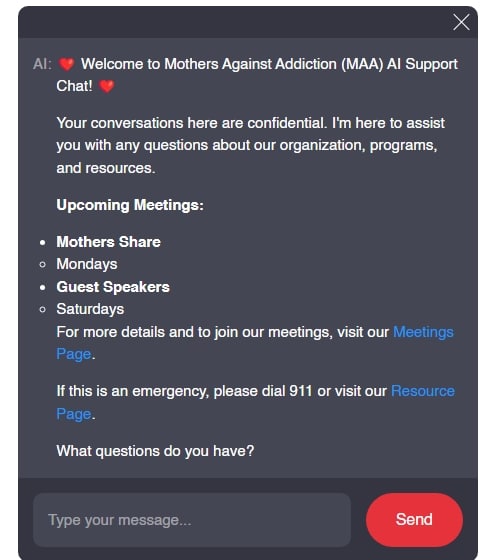When we talk about alcohol, a substance that’s woven intricately into our lives, we often skim over its complexities. The alcohol definition isn’t just a simple label; it represents a world where joy and sorrow often collide. Alcohol, in its most fundamental form, is a colorless and flammable chemical compound—ethanol (C2H5OH)—that arises from the fermentation of sugars by yeast. It’s found in many beloved drinks, like beer, wine, and spirits. But it’s crucial to dive deeper into this definition and explore how alcohol affects our health and society at large.

Alcohol Definition: Beyond the Basics
Alcohol is far more than just a drink; it’s a cultural staple and a social lubricant. Having a cold one during a summer barbecue or sipping a glass of wine on a cozy evening can feel great. However, let’s not forget that alcohol is also a double-edged sword. Its allure can mask dangers that put individuals and families at risk.
Understanding alcohol’s role might change how we perceive its place in our lives. Think about how we often celebrate holidays, like Thanksgiving, where sharing drinks is part of the ritual. But while joy fills the air, hidden dangers lurk in the shadows. The fine line between enjoyment and harmful use becomes blurry, and suddenly, that celebratory toast morphs into a concern for many parents witnessing their children grapple with addiction.

The Toxicity Definition: How Alcohol Affects the Body
Let’s discuss the toxicity definition of alcohol. The degree to which alcohol can inflict harm is shocking. When consumed in moderation, its effects seem benign, even pleasurable. Yet, excessive drinking can spiral into severe health problems, including liver disease, heart issues, and various forms of cancer.
A prime example of this peril is the renowned rum brand, Bacardi. Many see Bacardi as a staple at celebrations and a symbol of carefree enjoyment. However, studies documented in The Lancet spotlight how binge drinking—particularly involving high-alcohol-content drinks—presents significant health risks. This juxtaposition shows that while Bacardi may enhance a joyful moment, it can also lead to dangerous consequences when consumed irresponsibly.
The Red Flags of Consumption
The Toxic Definition: Social and Health Implications of Alcohol
When we examine the toxic definition, it doesn’t just appear in a medical sense. Alcohol’s presence in society reflects a broader cultural narrative—one filled with celebration but shadowed by struggle. Socially, alcohol is often the centerpiece of joyous occasions, like weddings or New Year’s Eve parties. Yet, simultaneously, it heralds a darker truth for families affected by addiction.
The alcoholic beverage industry was valued at a staggering $253 billion in 2020, as per the Distilled Spirits Council. With this monumental figure comes an unsettling statistic: over 14 million adults in the U.S. battle alcohol use disorder, reported by the Substance Abuse and Mental Health Services Administration (SAMHSA). Grappling with this reality reveals the paradox of alcohol—how it can both bring joy and create chaos.
Celebratory Moments in Contrast
Celebration is often accompanied by alcohol consumption—think about a graduation party or a baby shower. However, something simple can trigger disastrous outcomes for families dealing with addiction. Consider the personal stories of parents who’ve lost children to alcohol-related circumstances or who face the daily challenge of their child’s battle with addiction. For them, this contrast brings heartbreak into their homes, reminding us that while some raise a glass, others are left picking up the pieces.
Adverse Definition: Recognizing Addiction and Consequences
Let’s dive into the adverse definition, which centers on the harsh realities of alcohol misuse. Addiction doesn’t discriminate; it places burdens on individuals, families, and communities alike. Families can face dire consequences stemming from alcohol addiction, including fractured relationships, child welfare concerns, and job loss.
Consider the journey of Eric Clapton, an iconic musician whose story illustrates the grim fallout of addiction. Clapton’s candid autobiography exposes struggles with alcohol, detailing how it tarnished relationships and deeply impaired his mental well-being. His narrative resonates with many parents who witness their children traverse similar dark paths, offering both a cautionary tale and a glimmer of hope through recovery.
Understanding Addiction’s Lurking Presence
The Changing Perception of Alcohol in Modern Society
A fascinating shift in how we perceive alcohol over recent years is undeniable. Folks are starting to embrace moderation and mindfulness, realizing they can enjoy social settings without the need for alcohol. Brands like Heineken 0.0 and Athletic Brewing Company have stepped up, creating non-alcoholic beer options that satisfy taste buds without compromising health.
This movement captures an emerging societal consciousness aimed at recognizing alcohol’s toxic effects. Many people now actively choose healthier alternatives, proving that enjoyment can come without alcohol—the choice to have fun doesn’t have to hinge on raising a glass.
Making Mindful Choices Together
Embracing Awareness and Support
As we reflect on the many definitions of alcohol—whether its toxicity or the adversity it causes—we must prioritize awareness and compassion. Organizations like Mothers Against Addiction work tirelessly to assist parents grappling with the implications of their children’s addiction. Their mission emphasizes understanding and education, urging communities and families to foster support and empathy.
By promoting open dialogue, sharing experiences, and developing informed perspectives, we can dismantle the stigmas surrounding alcohol. Together, we embrace a future where individuals and families can navigate these challenges with clarity, hope, and healing.
Raising awareness isn’t just beneficial; it’s essential. As a community, let’s lift each other up and spark conversations that pave the way to healthier lifestyles. We can create spaces where society honors joy without sacrificing well-being, enabling families to heal and grow stronger together.
Through understanding and compassion, we can make strides toward a future where addiction doesn’t dominate the conversation—but kindness and support do.
For more resources, visit our site at Mothers Against Addiction to find help for you and your loved ones.
Alcohol Definition That Will Change Your Understanding
What Exactly is Alcohol?
When you hear the term “alcohol,” you might picture a festive gathering with clinking glasses, but there’s more to it! Alcohol is defined scientifically as a type of organic compound that contains hydroxyl (–OH) groups, driving home the point that it’s not just a party starter. Did you know that different types of alcohol can have vastly different effects? For instance, the popular compound ethanol is commonly found in beverages like beer and wine, while methanol, which can be toxic, is used in industrial applications. This fascinating chemical makeup of alcohol is often overlooked, much like the importance of understanding How long Does Thc stay in urine can vary depending on several factors.
The Impacts on Health
It’s startling how alcohol can affect overall health, especially for certain groups. For instance, pregnant Women face unique risks associated with alcohol consumption, which can lead to serious developmental issues for their children. Awareness of these implications can help expectant mothers make informed choices, underscoring how critical education on alcohol definition is in today’s society. There’s so much we still don’t know, yet evidence indicates that moderation is vital. On a different note, let’s not forget how food intake process And mental health can both influence and be influenced by our relationship with alcohol, making this topic even more layered.
Fun Tidbits and Trivia
Now, let’s spice things up with some trivia! Did you know that one of pop culture’s most talked-about figures, Britney Spears, famously posed for a magazine cover in the nude? This moment is often debated in the context of fame and alcohol, showcasing how public pressure can sometimes lead individuals down a troubled path. Another interesting little nugget involves characters like Don Vito from classic television, who often portrayed a carefree attitude towards drinking. It’s all connected—the portrayal of drinking in media and how it shapes our perceptions. And as we reflect on these various angles, it’s crucial to access support in Spanish for those who may be grappling with addiction, ensuring no one feels isolated.
On a lighter note, you might enjoy sharing a Thanksgiving Gif with friends, celebrating the ups and downs of family gatherings—often laced with beverages of choice! However, engaging with easier topics, like the latest episode of a show such as Island Of The Dead Episode 2, can also provide a welcome distraction from the discussions surrounding alcohol’s serious impacts. Understanding alcohol definition isn’t just an academic exercise; it’s about grasping how it intersperses itself in many facets of life, making us rethink the little moments that often go unnoticed.





























